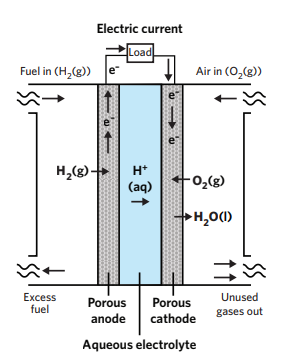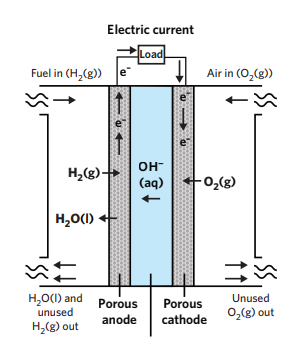Kk5 - Fuel Cells
1/4
There's no tags or description
Looks like no tags are added yet.
Name | Mastery | Learn | Test | Matching | Spaced |
|---|
No study sessions yet.
5 Terms
What are they?
Fuel cells are a specific type of galvanic cell that:
produce electrical energy (and heat as a by-product) from a supplied fuel via a redox reaction
require a continuous supply of reactants from an external source
use porous electrodes to maximise efficiency of diffusion of gaseous reactants and to maximise the ability of catalysts
are used to power small electronic devices, vehicles, and more.
Set up of a fuel cell (acidic)
Hydrogen as an energy source and an acidic electrolyte
Hydrogen gas is continuously pumped in as the fuel and oxidised at the anode
Oxygen gas is continuously supplied as a reactant and reduced at the cathode
Half reaction, overall reaction and theoretical cell voltage:

Set up of fuel cell (basic)

Advantages
Lower emission of harmful sulfur and nitrogen-containing compounds ( compared with direct combustion of fuels)
Low maintenance and running costs
Quiet
No direct CO2 emissions from hydrogen fuel cells
Great efficient than direct combustion, partially if thermal energy produced is harnessed for car/home heating
Disadvantages
Storage and safety issues associated with high explosive hydrogen fuel
Expensive to manufacture (esp. porous electrodes)
Required new infrastructure for hydrogen fuel e.g. Refill stations
Hydrogen fuel generally produced via electrolysis of water
Only as environmentally friendly as the electricity used in this process
May not be as efficient or convenient as batteries